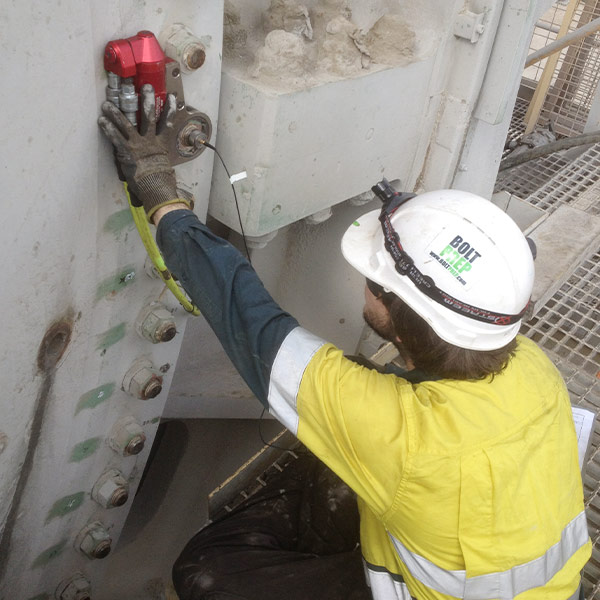Ultrasonic Bolt Load Verification
Ultrasonic bolt load measurements of bolt preload are carried out by introducing a sonic pulse at one end of the fastener and accurately measuring the returning echo known as time of flight (TOF).
The TOF is converted into an “ultrasonic length” each fastener has a different ultrasonic length. When the ultrasonic length is recorded an associated wave form which is unique to each fastener is also recorded, this allows very accurate re-monitoring.
The Ultrasonic length is then used to provide a baseline from which future measurements can be taken and a comparison can be made.
Fasteners act like a very tight spring as they are tightened they get longer. As each fastener increase in length the TOF also increases.
The ultrasonic length of the tightened or stretched fastener is directly proportional to the load the fastener is applying. A second tightened / stretched ultrasonic reading allows us to calculate the exact load the fastener is applying to the joint.

Ultrasonic bolt load verification has been used in many industries to maintain the correct preload that critical fasteners apply. Problematic bolted joints such as liner bolts on grinding mills have used this technique and successfully stopped the breakage between shutdowns reducing costly excessive unplanned down time.
Ultrasonic bolt load verification coupled with other Non-destructive testing techniques enables us to collect an ultrasonic snap shot of the health of your critical bolts. These techniques give us the ability to look for the small cracks in the root and flanks of threads which left unchecked will eventually lead to bolt breakage and joint failure.
Excessive Load loss or gain is the first step towards failure.
